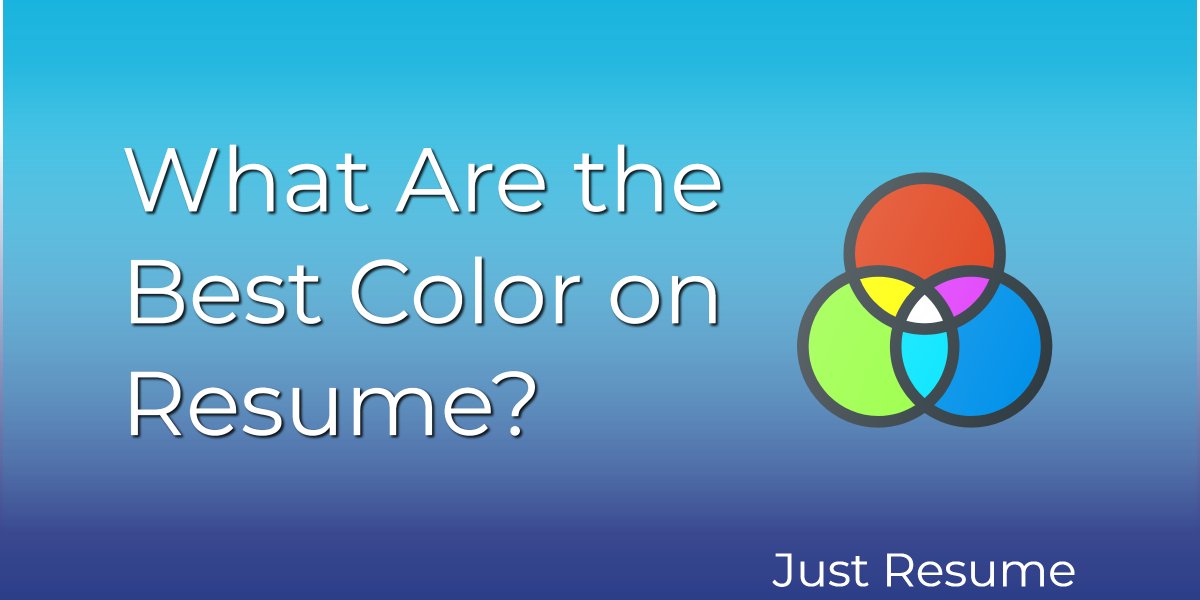
What Are the Best Color on Resume?
Is it ok to use colors on your resume? When is the right time to use colors on a resume? What are the best colors for a resume?
There is no simple answer to these questions but worry not because this piece brings clarity to the whole issue of using colors on resumes.
Why use colors on your resumes?
While there is no simple answer that explains why it is worth using colors on a resume, below are some reasons why you may want to use colors:
- Using colors helps grab the attention of readers (recruiters), especially when applying for a creative job.
- Colors help you express your attributes.
- They also help you create an emotional connection with recruiters.
In fact, according to a study by Resume Target, which polled a group of professionals on LinkedIn to get the answer on the use of colors on resumes, 55% of the experts said they would not disregard resumes that use colors. See the results below.
- 55% of professionals said No
- 11% of professionals said Yes
- 34% of professionals said that it depends on the industry
From the findings, it is evident that a huge percentage of experts are ok with resumes that incorporate colors. It is also clear you can expect to lose 11% of job opportunities by simply using colors.
But why do some hiring managers accept colors while others don’t? We have broken down the reasoning so you can decide your course of action.
- Yes
Using light colors sparingly throughout a resume helps in highlighting specific areas of the information and breaking up sections of the resume.
- No
The use of too much color or bright colors on a resume is seen as unprofessional.
Whether you use colors on your resume or not, your main focus should be on clarity and readability. This means you have to make sure your resume color scheme does not compromise clarity and readability.
What are the best colors for a resume?
As we said before, there is no simple answer to this. But here is the thing:
The best resume color majorly depends on the job you are applying for and the impression you want to give. Always make sure to sell your professional image.
Black, white, and a third color, such as green or blue, are perfect colors to use. Simply make one color dominant, one secondary, and use the third to place emphasis.
For example, you can use black for text, white for the background, and the remaining color for highlighting crucial parts.
It is a good idea to try your best to use the same colors you have used on your cover letter on your resume, as this helps in creating a personal brand.
Best colors for a creative resume
When it comes to creating resumes, things are a bit different. Creative resumes give you the freedom to showcase your creativity to potential recruiters. This means you can use bright colors on your resume to grab the attention of recruiters.
But remember, as much as you have the freedom to use more colors, your focus is to make sure hiring managers get what they are looking for. You focus on what you like; automatically, you give recruiters an opportunity to trash your resume. Ready for such a kind of experience? Of course not.
What different colors symbolize
It has been a long-debated theory about whether color can invoke emotional responses and reactions, but the basic principles seem to always remain the same among psychologists, interior designers, and artists:
- Red is an expression of action, passion, power, or courage.
- Orange shows determination, encouragement, strength, and productivity.
- Yellow signifies optimism, positivity, energy, and vision.
- Green represents the environment, calmness, growth, and rebirth.
- Blue demonstrates trust, reliability, integrity, and professionalism.
- Purple represents luxury, spirituality, inspiration, and dignity.
How to tell when enough is enough
While it is not easy to tell that enough is enough, analyzing your resume for readability and clarity can help tell whether you have used the right color on not. The correct resume color scheme does not overwhelm readers and makes sure a resume is easy to read.
Basically, try your best to keep your resume simple. Here is how:
- Use color sparingly – one to two colors maximum
- Use color to strengthen your personal brand only
- Don’t add color to the font or text of your resume as this can make it difficult to read
- Do add color to little design elements such as bullets and borders
- Be consistent across all your application material.



